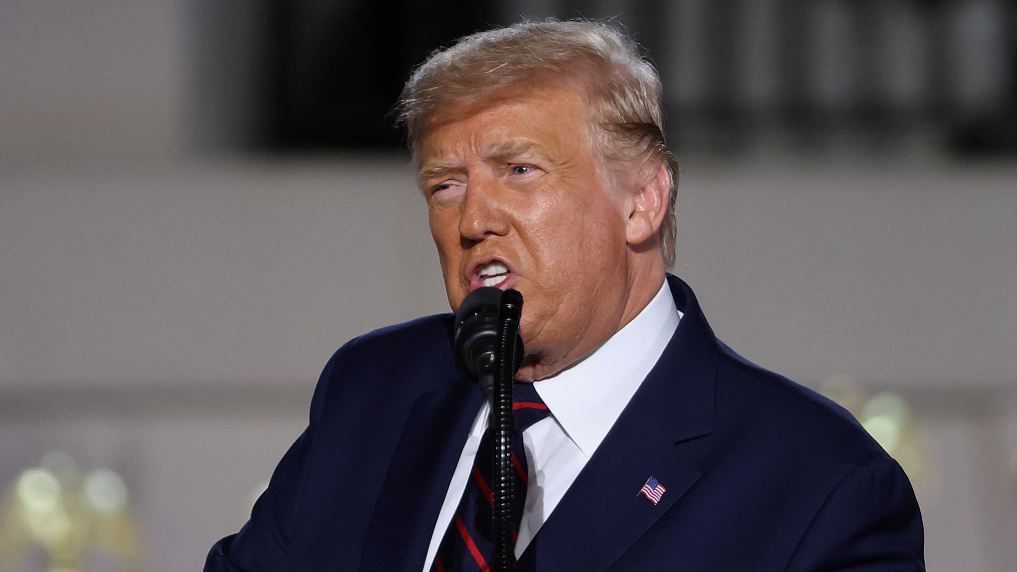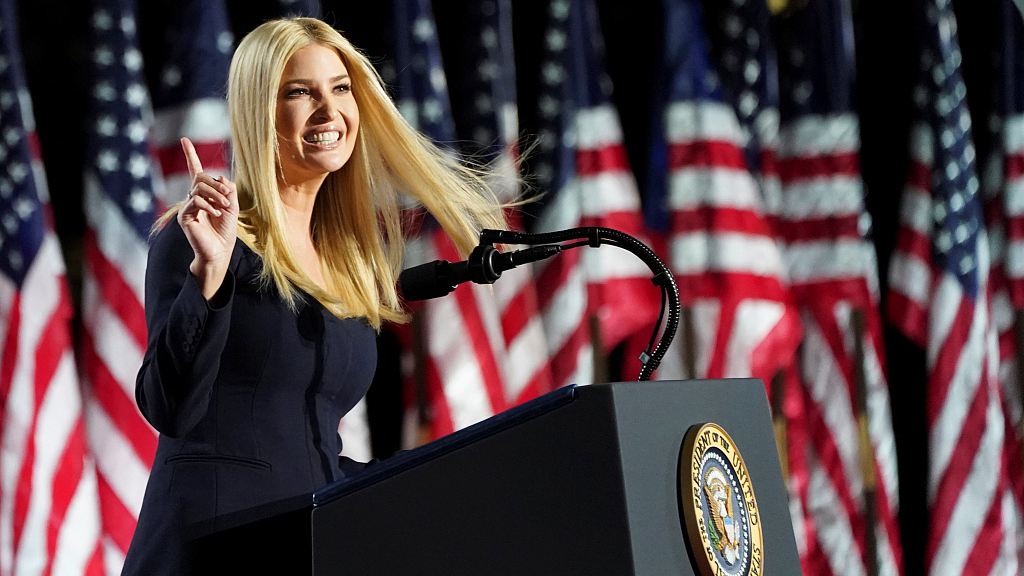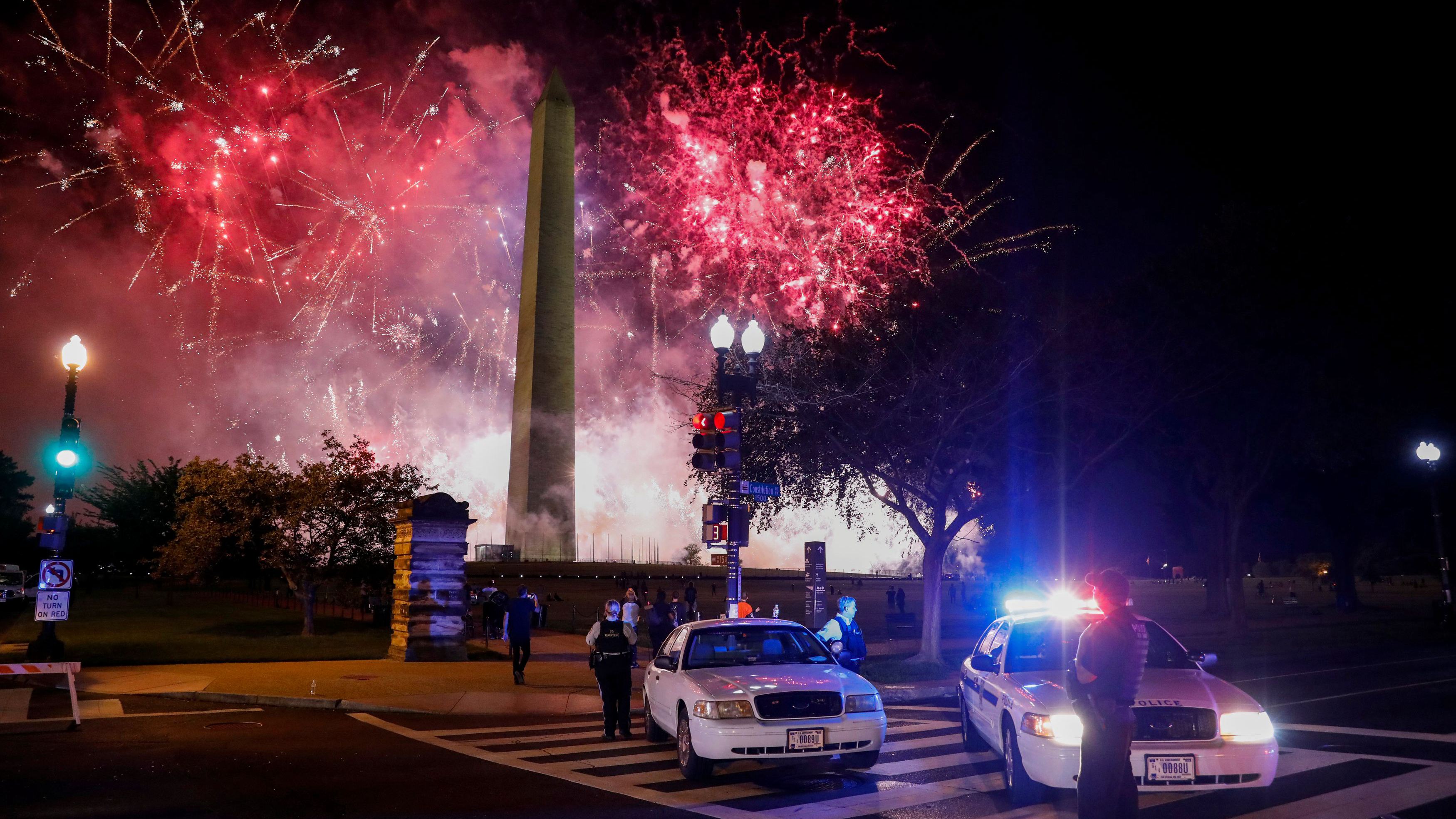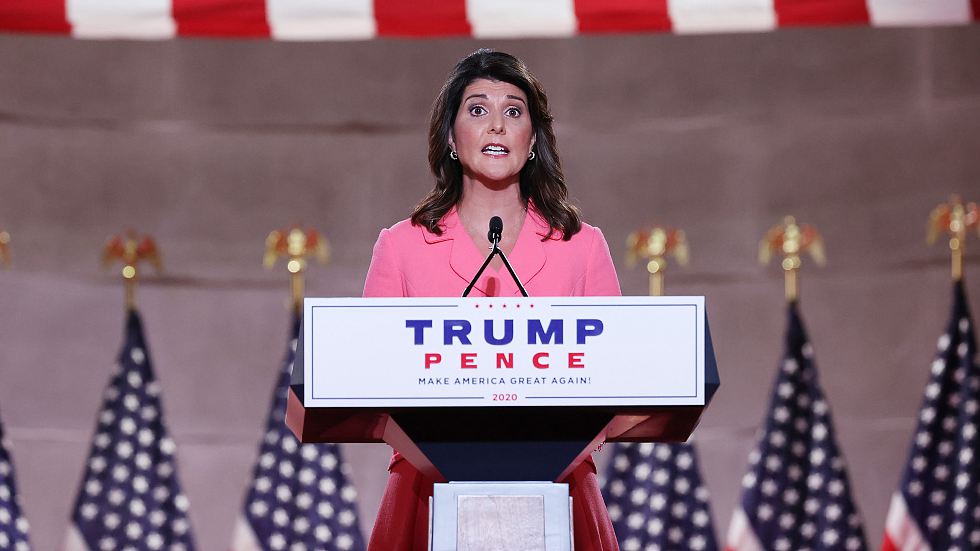The four-day Republican National Convention drew to an end on Thursday with Donald Trump accepting the party's nomination for the U.S. presidency in a norm-breaking speech from the South Lawn of the White House.
Read more:
Trump accepts nomination with attacks on 'destroyer' Biden
Five 2020 Democratic National Convention takeaways
The convention swung between hardline law and order rhetoric and attempts to soften Trump's image, as well as an array of attacks on Democratic rival Joe Biden and his running mate Kamala Harris, who currently have an average national polling lead of around seven points.
Here are six takeaways:
1. Trump desperate to make election a choice
Elections for incumbents are typically referendums on job performance, and the race for the White House in 2020 has been dominated by the successes and failures of Trump rather than Biden's candidacy.
The president is trying desperately to change that narrative.
His approval rating remains stuck in the low 40s, and approval for his handling of the COVID-19 pandemic was 31 percent in an Associated Press-NORC Center for Public Affairs Research poll released on Monday. With the economy struggling, the pandemic showing few signs of slowing and protests across the country, Trump needs to make the election less about him and more about Biden.

U.S. President Donald Trump accepts the 2020 Republican presidential nomination at the White House in Washington, U.S., August 27, 2020. /VCG
U.S. President Donald Trump accepts the 2020 Republican presidential nomination at the White House in Washington, U.S., August 27, 2020. /VCG
In his acceptance speech on Thursday he repeatedly cast his own vision against a dark picture of Biden's record and plans for the future. He mentioned his rival by name 41 times – in Biden's speech at the Democratic convention, "Trump" wasn't uttered once.
One weakness for Trump – and strength for Biden in this election – is that the Democrat is hard to define: Republicans have attacked him as a status quo establishment figure and a Trojan horse for the "radical left," sometimes weak on crime and sometimes a hardliner. The mixed messages don't appear to be hitting home with voters.
2. Smoothing Trump's rough edges …
The Republicans – and particularly Trump – have big problems with female and older voters as they head towards the November 3 elections.
Women are more reliable voters than men, and increasingly more likely to vote Democrat than Republican. And polls suggest older voters, who strongly backed Trump in 2016, have inched towards Biden during the pandemic.
The Republicans tried to counter concerns over the president's rhetoric and harsher policies by presenting a softer image of him, with videos showing him talking to everyday Americans and a diverse group of speakers praising his character and job performance.

Ivanka Trump speaks at the White House in Washington, U.S., August 27, 2020. /VCG
Ivanka Trump speaks at the White House in Washington, U.S., August 27, 2020. /VCG
Ivanka Trump introduced the president on Thursday, casting him as "the people's president," talking about him as a grandfather and highlighting his less hardline policies.
It was an acknowledgement of the growing problem the president has with white female voters, particularly in the suburbs. In 2016, Trump won 52 percent of the male vote and just 41 percent of the female vote. But among white women, who made up 41 percent of the electorate in 2016, Trump beat Hillary Clinton by two points, according to Pew Research.
The challenge for Trump is stark: white, college-educated women are now overwhelmingly Democratic – 59 percent voted for the party in the 2018 midterms – and polls suggest white, non-college-educated women are trending away from the president.
Perhaps undecided voters will take a second look at Trump after the convention, but expecting him to maintain the new image for two months is ambitious.
3. … and escalating law and order messaging
Speaker after speaker at the convention argued only Trump can offer "law and order," with the president and Vice President Mike Pence going so far as to warn "you won't be safe in Joe Biden's America."
This is part two of an attempt to sway suburban voters, straight out of Richard Nixon's 1968 election playbook. Whether the same message of fear can work five decades on is debatable: both the suburbs and views have changed. "Law and order are on the ballot," Pence said. "The choice in this election is whether America remains America."

Demonstrators face off with a security officer near a fence around the White House during a protest in Washington, U.S. August 27, 2020. /Reuters
Demonstrators face off with a security officer near a fence around the White House during a protest in Washington, U.S. August 27, 2020. /Reuters
Demonstrations in Kenosha, Wisconsin are ongoing following the shooting of a black man, Jacob Blake, by a police officer on Sunday. Blake wasn't mentioned by Trump or Pence, both of whom expressed strong support for the police.
The Trump campaign also admits to seeing the unrest as a useful electoral backdrop: "The more chaos and anarchy and vandalism and violence reigns, the better it is for the very clear choice on who's best on public safety and law and order," outgoing White House adviser Kellyanne Conway said on Wednesday.
The strategy is risky – the protests are, after all, happening in Trump's America even if the cities are Democrat-run – and suburban voters have been largely supportive of the Black Lives Matter movement.
4. Convention breaking
Trump has ripped up the rulebook from the start of his political career, and the staging of the party jamboree was no exception as he blurred the lines between overt campaigning and presidential duties.
The most obvious example was Thursday's acceptance speech, delivered from the South Lawn of the White House, from a podium bearing the presidential seal, and followed by a firework display around the Washington monument. Melania and Ivanka Trump also gave party speeches from the White House.

Donald Trump campaign fireworks explode behind the Washington Monument in Washington, U.S., August 27, 2020. /Reuters
Donald Trump campaign fireworks explode behind the Washington Monument in Washington, U.S., August 27, 2020. /Reuters
Other breaks from the norm included the president signing a pardon for an ex-convict during the convention, a naturalization ceremony overseen by acting homeland security secretary Chad Wolf and Secretary of State Mike Pompeo giving a speech from Jerusalem while on an official visit.
Overall the coverage of the convention was smooth, helped by the majority of speeches being pre-recorded, though TV ratings were lower than for the Democrats and for previous years. Vice-presidential hopeful Kamala Harris' speech on the third night of the Democratic convention drew 21.4 million television viewers, for example, six million more than Pence's address on Wednesday.
5. No policy, no pandemic
Republicans lambasted Democrats for offering a policy-free convention last week and promised an optimistic outlook – but when it came to their turn, there was little positive vision of the future and no policy platform was presented.
Speakers did make clear that opposition to abortion, support of gun rights and hardline policies on immigration would continue, and Trump on Thursday made vague promises to cut taxes and broadly continue the approach he has taken since 2017.

Donald Trump and Mike Pence, Baltimore, Maryland, .U.S., August 26, 2020. /VCG
Donald Trump and Mike Pence, Baltimore, Maryland, .U.S., August 26, 2020. /VCG
There was little mention of COVID-19, which has killed over 180,000 Americans. With two notable exceptions – Melania and Ivanka Trump – there was minimal acknowledgement of the losses or the broader suffering the pandemic has caused.
During Trump's speech, 1,500 people sat close together largely without masks, and high profile speakers including Pence and economic adviser Larry Kudlow even referred to the disease – which killed 1,260 Americans on Wednesday – in the past tense.
The campaign is desperate to put the pandemic in the rearview mirror, but the realities are hard to hide – more than 3,000 Americans have died from COVID-19 since the convention began on Monday.
6. Lining up for 2024
The convention was dominated by Trump, appearing regularly on the first three nights before his big acceptance speech on Thursday, and his family: Melania, Ivanka, Eric, Tiffany, Don Jr and Lara Trump all gave speeches, as did Don Jr's partner Kimberly Gilfoyle.
The Republicans are now dominated by the Trumps, but the president is on the back foot with two months until Election Day – what happens to the party if he loses?

Nikki Haley speaks at the 2020 Republican National Convention in Washington, U.S., August 24, 2020. /VCG
Nikki Haley speaks at the 2020 Republican National Convention in Washington, U.S., August 24, 2020. /VCG
Several contenders for the 2024 nomination took to the stage during the convention, from Pence, who played the role of courteous attack dog, foreign policy hawks Senator Tom Cotton and Pompeo to more moderate figures like former UN ambassador Nikki Haley and Senator Tim Scott.
Speculation is also swirling around the Trump children, all of whom – other than Ivanka – eschewed traditional personal stories about their father in favor of starkly political speeches.
There were also notable absentees and a lack of star power: former President George W. Bush and 2012 nominee Mitt Romney had no role, and 12 Republican senators opted to stay away from Trump's acceptance speech.